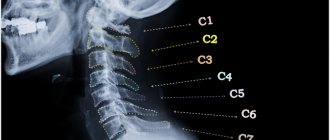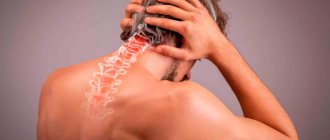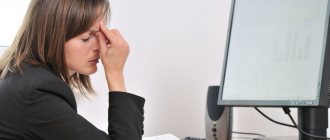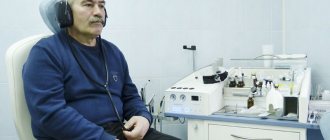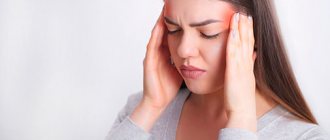Causes of headaches in children
Doctors divide headaches into primary and secondary . Primary ones are independent diseases. In childhood, these are mainly migraines and tension headaches. In secondary cases (cephalgia) it is only one of the symptoms of another disease. There are more than 150 known diseases that are accompanied by headache complaints.
The cause of headaches is always a violation of the blood supply to the brain. But why this happens - there can be quite a few possible answers to this question. For example:
- Imperfection of the body's autonomic system,
- Beginning colds (prodrome),
- The presence of any serious disease: kidney disease, endocrine disorder, anemia, rheumatism and others;
- Toothache, which provokes headache;
- Consequences of head injury;
- Excessive nervous tension associated with stress, long hours of work, conflict, serious experience, etc.
- Influence of the external environment: prolonged stay in a stuffy room, increased solar radiation, prolonged exposure to the sun, etc.
Headaches can occur as a reaction to changes in the environment or in the body (reactive), poor lifestyle: when a child has too little or too much sleep, spends too much time in front of the computer or TV screen, is not physically active, or eats incorrectly. After the initial examination of the patient with complaints of headaches, the pediatrician will refer him for the necessary consultations and examinations, depending on the identified disorders. In most cases, children with complaints of headaches are observed and registered with a neurologist.
Diagnosis of the causes of headaches and dizziness
To diagnose the causes of headaches and attacks of dizziness in children, the neurologist examines the patient, and also carefully interviews the patient himself, and, if necessary, his parents. During the examination, the doctor performs a series of neurological tests, the results of which will help assess the extent of the neurological deficit. These data may not be sufficient to make an accurate diagnosis. Therefore, all patients are prescribed an examination that may include:
- X-ray or CT scan of the spine;
- MRI of the spine;
- Ultrasound of neck vessels with Doppler sonography;
- UAC;
- blood chemistry.
The most technically difficult and expensive procedure is MRI, since for 20 minutes you need to lie absolutely motionless in a closed chamber of the device. Therefore, in young patients, the study is usually carried out in a state of medicated sleep.
Based on the results of the examination, the neurologist can already understand exactly what caused the child’s headaches and dizziness and prescribe the most appropriate therapy for a particular situation.
Headaches can come in different ways. How to find out the reason depending on the complaints
Pain in the back of the head.
If a child, complaining of a headache, points to the crown and back of the head, most often we are dealing with a tension headache. It usually occurs in the afternoon and is associated with posture, when the child is already quite tired: he spent a lot of time sitting during the day. About a third of visits to the doctor complaining of headaches are due to this type of pain.
Tension headaches are associated with overload of the neck muscles. Invite your child to stretch his neck and shoulders, do calm exercises, and lie on the floor to relieve tension from his back and neck.
Pain in the temples.
Pain in the temporal region often indicates an autonomic disorder. Here it is worth looking for an individual method, but most often either resting in a well-ventilated area or a short walk helps.
The forehead and top of the head hurt.
This is usually pain in the first half of the day, and can be caused by increased intracranial pressure. If such pain recurs systematically, you should consult a doctor - a pediatrician, an ENT doctor and undergo additional examinations.
Half of my head hurts
. This seems to be a manifestation of migraine: unfortunately, it can start at an early age. This is a sharp pain that occurs suddenly, at any time during the night, and intensifies within 10-15 minutes from mild to almost unbearable. In this case, the most important thing is to stop the attack as soon as possible. If your child has a history of migraines, it is best to give him a pain reliever as soon as he begins to complain of increasing pain.
First aid: advice from a pediatrician
- Put the patient to bed
- Eliminate TV and other external irritants
- Provide access to fresh air
- You can take a painkiller (check the dosage with your doctor)
There are many varieties and forms of this pathology in children. Only a doctor can identify the cause after a thorough examination. To clarify the diagnosis, the following may be prescribed:
- complete blood count, urine test, blood biochemistry
- feces on worm eggs
- ECG
- duplex examination of the vessels of the brain and neck
- X-ray of the cervical spine
- MRI
Only after diagnosis can the doctor say exactly why the child is experiencing discomfort.
Which doctors should I contact if I have pain in my forehead?
If you have cephalgia of unknown origin, you should visit a pediatrician. He will conduct an initial examination, make a preliminary diagnosis and refer you to a specialized medical professional. If your baby has a fever or there is a noticeable deterioration in his general condition, it is better not to risk it and call a doctor or an ambulance at home.
Depending on why the child’s forehead hurts, he may need help from the following specialists:
- neurologist;
- ENT;
- dentist;
- ophthalmologist;
- surgeon;
- pediatrician;
- psychotherapist;
- oncologist.
If a child has a severe headache in the forehead area, simple diagnostic methods and complex research options can be used to identify the cause. The first include general and extensive blood and urine tests, which allow you to exclude inflammation, an infectious process, and suspect the presence of tumors. Additionally, CT, MRI, and skull radiography can be performed. In most cases, an electrocardiogram is taken.
Main causes of forehead pain
When trying to establish the factors that provoked a headache attack in the child’s forehead, it is necessary to evaluate the patient’s vital functions.
The appearance of prolonged seizures in children aged 7 years is often a consequence of the start of school. However, the causes of the symptom do not necessarily lie in mental stress. Perhaps the baby has simply not yet adapted to the new team and is internally worried.
When figuring out why a baby, preschooler or teenager has a headache, you need to pay attention to the whole picture of the situation as a whole. Cephalgia is rarely the only manifestation of the problem.
Infectious diseases
If a child has a fever and a sore forehead, the first thing you can suspect is the onset of a cold or ARVI. In this case, cephalalgia occurs against the background of intoxication of the body.
The sensations can radiate to the temples and crown, and with severe fever, cover the entire head. The picture is accompanied by weakness, moodiness, and loss of appetite in the baby. It is important to remember that even a mild cold in children should not go away on their feet. The patient needs to be provided with bed rest and complete rest. During periods of increased viral danger, it is better not to delay going to the doctor. A specialist will rule out the flu in a young patient and tell you how to properly organize treatment.
Sinusitis
Inflammation of the maxillary sinuses occurs against the background of incompletely cured infectious diseases, adenoids, deviated nasal septum, chronic tonsillitis, or refusal to treat carious teeth.
The disease can be suspected if the child has a severe headache in the frontal part and the sensation intensifies when tilting the head down and tapping the areas around the nose with fingers. In this case, discharge from the nasal passages in the form of mucus or pus is often observed. There is a feeling of fullness in the upper part of the face. The picture is complemented by high fever and weakness due to intoxication.
Frontit
The clinical picture of inflammation of the frontal sinuses is similar to the development of sinusitis. The child also has pain in the frontal part of his head. The symptom is accompanied by pressure on the eyeballs from the inside, lacrimation, and photophobia. It is difficult for the baby to breathe through the nose; tapping the area between the eyebrows with a finger causes severe pain. Symptoms appear immediately after waking up and intensify when bending over or in a horizontal position of the body. With an aggressive course of the disease, swelling of the brow ridges may be observed.
You can learn more about the effect of sinusitis on cephalalgia here.
Brain concussion
After a head injury, cephalalgia is always present. Depending on the strength and location of the blow, pain can occur in any part of the head, including the forehead.
The situation may be accompanied by a short-term loss of consciousness, lethargy, capriciousness or irritability of the baby. If a child feels nauseous and vomits after an accident, this indicates a concussion. The patient should be immediately shown to a doctor to assess the extent of organ damage and exclude more serious consequences of injury. It is not recommended to let him fall asleep before this.
You can learn about the symptoms of a concussion in a child here.
Tension headache
In a child 6 years old or older, cephalgia may be triggered by studying. Staying in one position for a long time during a lesson, impressive mental stress and psycho-emotional stress from
communication with a large number of people leads to the development of symptoms. When a child has a headache in the back of the head and spreads to the entire circumference of the skull, be sure to consider this option.
The pain, which feels like a tight hoop or helmet, is accompanied by dizziness, nausea, loss of appetite, and mood swings. It appears in the afternoon and gets worse when trying to perform a stressful task. Ignoring the problem is fraught with the development of neurosis, to get rid of which you will have to consult a psychotherapist.
Migraine
This disease is typical not only for adults; its first signs can appear in childhood. If there is a genetic predisposition, you should carefully monitor the child’s behavior and condition. Timely initiation of therapy and prevention will allow a young patient to maintain a normal standard of living.
You will learn more about childhood migraines in this article.
The clinical picture is not much different from the development of an attack in an adult:
- headache of a pulsating type, which is localized on one side of the skull and radiates to the frontal part and eyeball;
- the attack may be accompanied by nausea. If vomiting occurs, it brings relief and allows the child to fall asleep;
- increased sensitivity to light, smells and sounds.
Migraine syndromes most often occur in girls aged 6-8 years and adolescents. They can grow over several years, after which their intensity decreases. Often, childhood migraine completely passes by the time a person reaches adulthood and never reminds of itself again.
Increased intracranial pressure
The accumulation of a large amount of cerebrospinal fluid in the skull leads to disruption of the cerebrospinal fluid circulation process. The biological mass puts pressure on the receptors, which leads to headaches. Depending on the type of lesion, additional symptoms may appear.
Increased intracranial pressure in children is the result of the following phenomena:
- traumatic brain injury;
- benign and malignant brain tumors;
- reaction to taking a number of drugs;
- hydrocephalus;
- intoxication of the body due to poisoning or infectious diseases;
- brain hypoxia;
- inflammation of the meninges;
- disturbance of metabolic processes as a result of vasospasm.
Headache can occur in any part of the head, including the frontal area. It is often accompanied by nausea and vomiting, tinnitus, decreased visual acuity, and swelling of the soft tissues of the face. Older children experience constant fatigue, weakness, decreased appetite, and irritability. Babies become capricious, anxious, they constantly cry for no reason.
Teething
In this case, a headache is typical not only for a child one year old, but also for a child 4-5 years old and even a teenager. The eruption of baby or molar teeth is accompanied by cephalgia, which is localized in the frontal part of the head, swelling and soreness of the gums, moodiness, and loss of appetite. Sometimes there is a slight increase in temperature, which is not accompanied by other signs of intoxication.
Other reasons
A one-time occurrence of a headache in the forehead may indicate the consequences of overwork or soft tissue injury.
If the unpleasant condition quickly passes on its own, there is no reason to worry. Systematic recurrence of attacks requires a thorough diagnosis in order to exclude organic and physiological problems.
You can learn more about the causes of pain in the frontal part of the head here.
Here are a few more reasons why a child may have pain in the frontal area of the head:
- decreased vision, forcing you to constantly strain your eye muscles;
- hydrocephalus;
- hematomas and abscesses in the brain;
- unhealthy diet based on processed foods and additives;
- lack of oxygen due to refusal to spend time in the fresh air;
- abuse of TV, computer and various gadgets;
- VSD.
Modern medicine has developed many approaches that can relieve a child of headaches and its causes without harm to the growing body. The sooner specialized treatment is started, the higher the chances for a quick and complete recovery of the baby.


